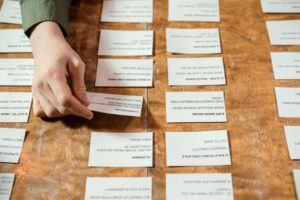Introduction
Test case design can be effective if QA is key. On the other hand, validation should be tested to prove the proper functioning of software applications by developing strong test scenarios. The designer’s knowledge about the system and knowledge about user requirements, who is doing what, where etc., are crucial since the choice of test cases depends mostly on that knowledge.
Building Effective Test Suites: An Intricate Art. Let us look at known approaches and tips for creating good quality optimized test cases that provide a holistic validation coverage with a reduced amount of repetitive cases.
To start with, let us talk about how tests are aligned with critical user workflows or risk areas noted during usage Then we will discuss the ways to build a proper structure of test suites to enhance defect detection. The selection of the negative test cases will also be addressed to confirm boundary conditions. Test maintenance is enabled by maintaining versions and traceability of test cases.
Lastly, we shall assess the effectiveness of the test suit through measurable factors such as coverage, and escapes into production, while using defect trends. Its goal is to outline a roadmap of approach to the complex art of designing test cases, identifying potential areas to increase QA effectiveness. We can enhance the user experience through strategic test design by stopping them in their early stages.

I. Systems and Their Requirements.
First and foremost, it’s necessary to have a thorough knowledge of the system and its requirements before delving into test case design. Such comprehension enables the development of good-fit test cases. Consider the following steps:
a) Requirement Analysis: Review the System Requirements, Functional Specifications, and documentation. It allows us to appreciate what the program is supposed to do.
b) System Familiarization: Learn about their features such as user interface, operating system, and what is beneath the surface of their application software. You can then detect the potential regions of complexity and weakness that demand very rigorous tests.
c) User Perspective: Stand from the end-user’s perspective and think about how they would expect, prefer, and use it. Use center orientation, which directs towards testing how the application performs in real-world scenarios.
II. Test Design Techniques
These include specific test design techniques that offer organized methods of crafting comprehensive and adequate tests. Here are some widely used techniques:
a) Equivalence Partitioning: For each class divide the input space into equivalent parts and develop a test case for it. This method eliminates repetition and allows for testing a select few relevant cases.
b) Boundary Value Analysis: Testing the boundaries and edge cases of input ranges should be focused on. For example, test cases should include input values at lower and upper boundaries and right-on or one-pixel off-centered values. It supports the detection of any problems concerning boundary conditions.
c) Decision Table Testing: Decision table for complex business rules and system behavior. There is a test case for each combination of conditions and actions which provides complete coverage of any scenario.
d) State Transition Testing: Create test cases that will be used to pass through various stages of the system. This method is extremely helpful in verifying systems that exhibit state dependence.
e) Pairwise Testing: Determine the most important combinations of input parameters and create as many test cases as possible, covering all possible pairs. It delivers maximum coverage with minimal use of test cases.
f) Use Case Testing: Develop a test scenario according to the relevant user story/use case. Using this method, the software is tested in alignment with how it should be used.
III. Test Case Design Best Practices
By knowing the system and using test design techniques, using the best practices as well may add more value to test case design. Consider the following practices:
a) Clear and Concise Test Cases: The test case should be written in a simple and precise way so as to give instructions on what to do and what is desired at each stage. This provides the clarity necessary for carrying out the test cases that yield identical results.
b) Test Data Management: Test Data Selection and Management. Employ both representative and boundary test data covering a variety of situations. Reproducible Test Data Management Reduces Dependencies.
c) Test Case Reusability: This would include developing reusable test cases that could be implemented in various cycles or for regression purposes. This eliminates duplication of efforts, hence saving time and reducing costs.
d) Traceability: Creation of Traceability between Requirements, Test Cases, and Defects. It helps in aligning test cases with intended coverage and enables tracking defects to their root causes.
e) Test Case Reviews: Review peer reviews of test cases for any possible areas that can do with adjustments and clarity. Test scenarios are enriched with multiple perspectives, leading to higher quality test scenarios and more effective exchange of ideas within the team.
f) Test Environment Considerations: In designing test cases consider the specific test environment comprising of hardware, software, and network configurations. Such scenarios mirrored an actual deployment environment thus they were relevant.
IV. Maintaining Test Cases and Refining Iteratively
The iterative nature of test case design necessitates constant refinement. Test cases have to be revised whenever there is a change in the system or with regard to newly developed functionalities. Furthermore, test executions should provide feedback to enhance test scenarios. Review and revise your test case frequently in order to keep it effective and relevant.

Conclusion
The art of creating good test cases involves a thorough understanding of the system, the requirements, and the end user. Test scenarios by using systematic approaches such as test design techniques and best practices. QA team can come up with a complete test scenario that addresses all functionality and performance of the software.
For test case design, should comprise brief scenarios, reliable test data management, and thorough traceability. As the system evolves, cases have to be continually fine-tuned iteratively to stay current. It should also be taken into consideration in order to resemble a real use of the environment.
Test asset version control is maintained and facilitates collaboration through implementation. Enhancing Test Data Strategy Boosts Coverage and Defect Detection. Validation is uplifted by employing techniques such as equivalence partitioning, boundary analysis in structuring test suites, and error estimation.
Developing test case design skills is critical for QA professionals as it increases testing standards across projects. Using such technologies of test design enables QA not only to raise the quality of the product but also to contribute to the development process during all cycles.
In brief, cautious test cases are the bedrock of good quality assurance. This is an affirmation of knowledge, which allows the production of reliable software to surpass customers’ anticipations.

